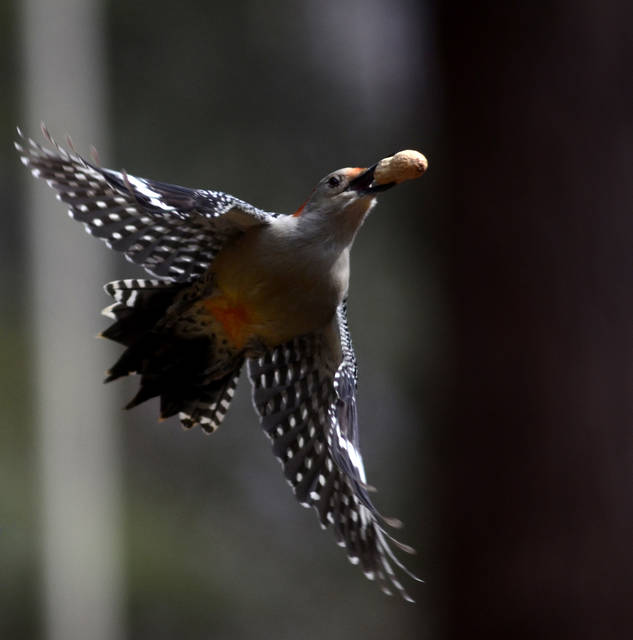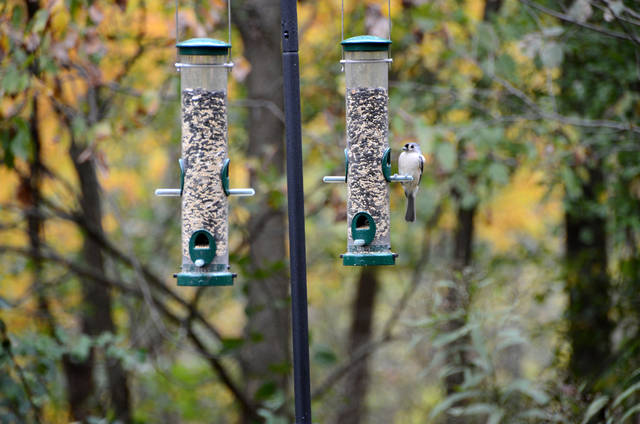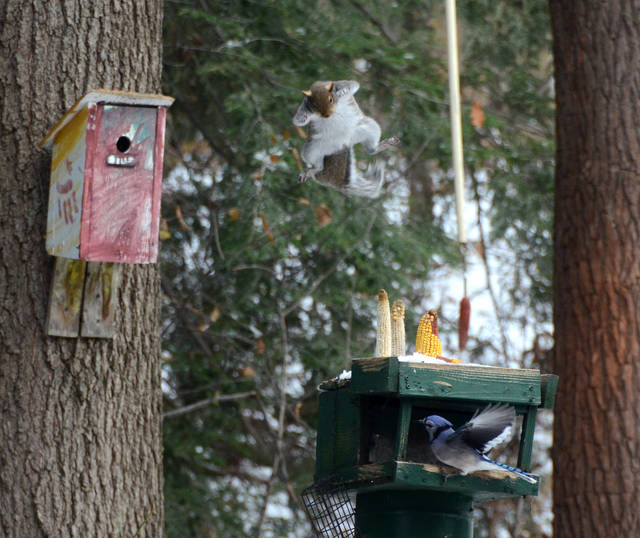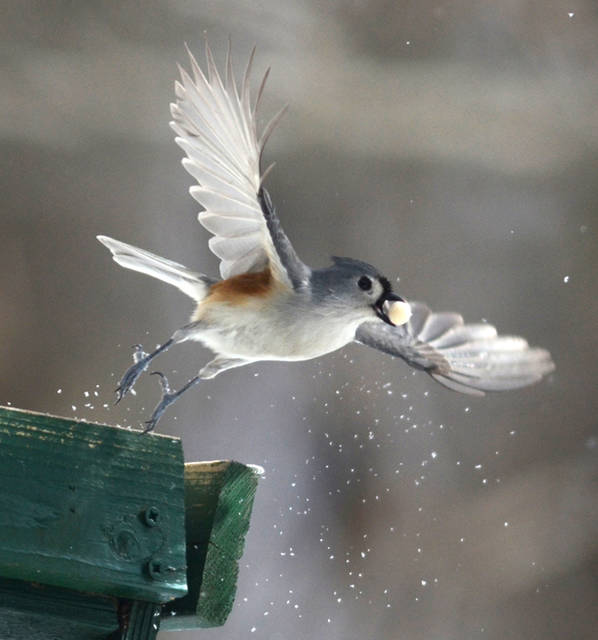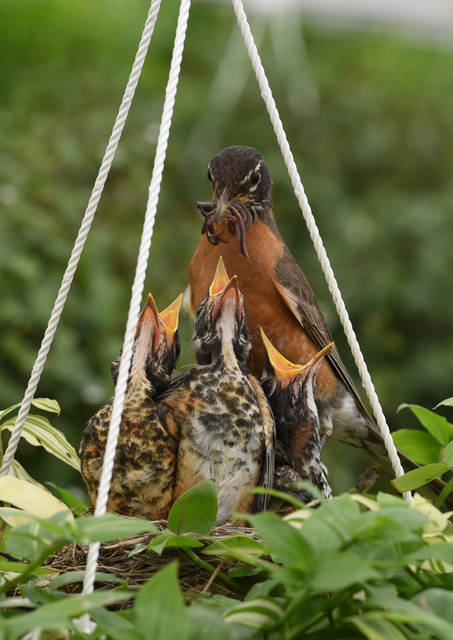How to attract birds to your garden, yard
As the sun peers over the horizon, a wren is happily singing away, already on the hunt for a mate, the days are getting longer. Max the Wonder Dog is 16, but even he listens quizzically to the little bird chirping away. As the fog burns off, peanuts are added to the bird feeder, shell and all. In minutes blue jays, nuthatches and titmice descend from the trees to snatch up their favorite treats followed by a beautiful red-bellied woodpecker that revealed its blushed underside after grabbing a whole peanut and quickly flying back to the forest.
Why to love your birds
Gardeners attract birds for many reasons. They are fun to watch, but feeding them also establishes a foraging route for them. When they have hatchlings, they will hunt on this route for insects to feed to their young. The fledgling birds will eat thousands of bugs.
The basics for attracting birds are covered in this video. Give them food, shelter and water to bring them into the landscape. During the winter, a birdbath heater can be used to prevent freezing. Shelter comes in the form of evergreens, which need to be at least 10 feet away from the feeders to prevent squirrels from getting to the birdseed. I did once have a squirrel launch itself from a birdhouse, which was almost 11 feet away from the feeder. The squirrel shocked an unknowing blue jay as the cute rodent landed roughly on top of the feeder. I moved the birdhouse to a new location and everything was fine again.
The pole feeders and hanging feeders also have a baffle on them to stop the squirrels, they get fed separately at their own feeder, usually being offered dried corn.
Plants, food for the birds
The birds in my garden get the good stuff. At the least it’s black oil sunflower seeds, but I like some of the special mixes from Cole’s Wild Bird and also use other mixes filled with the things birds love.
There’s more though that a gardener can do to make their landscape bird friendly. Simply leaving the garden alone, especially when it comes to perennials, will help the birds.
Things like Virginia creeper, liatris, sunflowers, hibiscus, coreopsis, goldenrod, coneflower and others have seeds that birds will feast on. The Virginia creeper is often referred to as a weed and mistaken for poison ivy. It’s a fast-growing vine that produces berries for the birds and the leaves turn deep red at the end of the season, putting on a show for the gardener.
Some plants going to seed, like milkweed, attract insects that in turn also bring the birds, which feed on the bugs. Many gardeners have been taught to basically clear-cut the perennial garden for a clean looks, but leaving plants up provide habitat and food for wildlife like birds.
Native plants
Create a borderof native trees and shrubs to shelter your yard from the wind. Pick plants that provide berries like juniper, dogwood, serviceberry, and viburnum. I planted ‘Chicago Lustre’ viburnum for the birds as it produces dark purple berries. Creating a brush pile somewhere in the garden or yard will also provide a staging area before and after feeding along with place to hide from predators.
Don’t rake up all the leaves as those areas will harbor insects that the birds will feast on too.
Help birds to nest
Put out small pieces of string or yarn that birds can use to make nests and include some animal hair too. Short pieces of string are best so the birds don’t get tangled. They can be put in an onion bag or suet cage and hung in a place that can be seen from the house.
Feed them suet
Suet is basically fat that gives birds quick energy. It can be bought and put into a feeder or made from suet available from the grocery story at the meat counter. Melt the suet until it’s clear then add some other bird treats like peanuts, sunflower seed, peanut butter, corn meal or fruit. I use an old plastic form for making burger patties to create my homemade suet cakes. Woodpeckers are especially fond of them.
Think spring planting
As we’re planning for spring planting, think about the birds. Trees like oaks, birches, crabapples and maples will provide habitat and more for them.
Birdhouses
There are a wide variety of birdhouses commercially available. They range in sizes to accommodate everything from chickadees and wrens to larger birds like owls. They should be in place around the landscape well before spring arrives. It can be a fun project for kids to paint unfinished houses. Let them be creative, it won’t matter to the birds. My daughter used sign each house by dipping her hole hand in paint and pressing her palm on the side of the house.
Welcoming birds into the landscape adds beauty; interest and these feathered friends actually help us garden.
Remove the ads from your TribLIVE reading experience but still support the journalists who create the content with TribLIVE Ad-Free.


